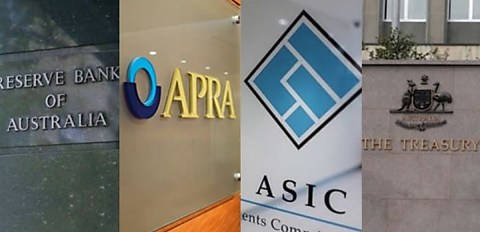The Council of Financial Regulators (CFR) – which includes ASIC, APRA, the Reserve Bank of Australia, and the Treasury – has noted growing concerns about loan arrears and hardship requests.
Following its meeting on 6 March, the CFR released its quarterly statement, revealing that while risks to the Australian financial system from lending to households are currently stable, “ongoing close attention” was still warranted.
According to the CDR, most households are meeting their servicing and repayment commitments, with most having made adjustments to their finances due to higher inflation and interest rates.
However, the council added that there has been an increase in the number of households that have fallen behind with loan repayments. While the increase is off the back of “historically low levels” of mortgage arrears, it added that hardship applications had “risen materially”.
Its statement read: “Most households continue to be able to meet their debt servicing and other essential spending commitments, although many have had to make adjustments to their finances in a period of higher inflation and interest rates. However, hardship applications had risen materially over the past year.”
This coincided with S&P’s RMBS Performance Watch: Australia quarterly report that found that prime mortgage arrears had risen to 0.97 per cent by the end of December 2023 (from a historical low of 0.58 per cent), while illion recently found that 0.4 per cent of all home loan accounts (approximately 23,000 accounts) are in some type of hardship agreement.
Illion found that the number of home loans with payments behind increased 25 per cent year on year and while the increases observed in 2023 seem to be tapering off, home loan 30-plus day arrears will “stabilise at a higher base in 2024”.
The CFR said it expects to see a “further increase” in arrears in the coming months.
“ASIC discussed with the Council its analysis on the experience of borrowers seeking financial hardship assistance from their lenders. There had also been an increase in the share of households who had fallen behind on loan payments (from historically low levels), and Council members expect some further increase in the period ahead,” its statement read.
The council also noted that the risks to household balance sheets and in turn financial stability would increase if inflation were to remain high for longer than anticipated or if labour market conditions deteriorate more than expected.
The regulators went on to discuss the preliminary results from APRA’s recent annual Hypothetical Borrower Exercise that has examined serviceability assessments from banks for different types of borrowers.
The council found that bank lending standards had “remained sound despite the competitive lending environment”.
The council also discussed the risks of cyber attacks on the financial system, given that attacks have increased in scale and complexity.
The statement said that regulatory initiatives and legislative work that are underway are important to improve “preparedness and resilience” in the financial industry.
It added that the Cyber and Operational Resilience Working Group has been working to “strengthen agency coordination” and improve the industry’s resilience to financial cyber attacks through scenario exercises.
The council approved the expansion of the Cyber Operational Resilience Intelligence-led Exercises (CORIE) program, which has highlighted cyber resilience strengths and weaknesses across the industry.
[Related: RMBS prime arrears continue to rise: S&P]
